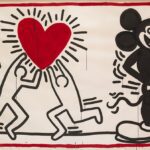David Bordwell’s “Film Art: an Introduction” presents a meticulous examination of cinematic elements that define and enrich the film medium. By dissecting narrative structures, character arcs, and visual techniques, the text equips Bordwell Film Art: an Introduction and enthusiasts alike with vital analytical tools. It challenges us to consider how these components not only convey stories but also shape our emotional responses and perceptions. As we navigate through these fundamental concepts, one must contemplate how such insights might transform our understanding of both classic and contemporary films. What implications do these analyses hold for the future of film studies?
Overview of Film Art
Film art encompasses the myriad techniques and creative choices that filmmakers employ to convey narrative, evoke emotion, and provoke thought.
Analyzing film history within its cultural context reveals how genre conventions shape audience engagement. The emotional impact of cinematic language reinforces the viewer’s experience, transforming mere observation into a profound connection.
Thus, film art serves as a powerful medium for exploring human experience and societal narratives.
Read Also: Blue:Fztffujm8-Q= Wallpaper Aesthetic
Key Concepts in Film Bordwell Film Art: an Introduction
Understanding the key concepts in film analysis is essential for dissecting the intricate layers of meaning embedded within cinematic works.
Character development serves as a lens for examining individual arcs, while thematic analysis uncovers underlying messages.
Genre classification aids in contextualizing films, and audience reception reveals how interpretations vary, collectively enriching the discourse surrounding cinematic art and fostering a deeper appreciation for its multifaceted nature.
Narrative Structure in Cinema
While narrative structure serves as the backbone of storytelling in cinema, it encompasses a complex interplay of elements that shape the audience’s experience and interpretation.
Character development and plot progression are intricately woven through various narrative techniques, including nonlinear storytelling.
Thematic elements further enhance audience engagement, inviting viewers to navigate the narrative’s layers and derive meaning, ultimately enriching their cinematic experience.
Visual Style and Techniques
Capturing the essence of a cinematic work, visual style and techniques play a pivotal role in shaping both the aesthetic and emotional dimensions of a film.
Elements such as cinematic lighting and color theory establish mood and tone, while framing techniques guide audience perception.
Additionally, visual motifs reinforce thematic narratives, creating a cohesive experience that resonates deeply, encouraging viewers to engage with the film’s underlying meanings.
Read Also: Blue:Dvaxjwqez4m= Pomeranians
Conclusion
In conclusion, “Bordwell Film Art: An Introduction” serves as a vital resource for understanding the multifaceted nature of cinema. Through the examination of narrative structure, character development, and visual techniques, the text Bordwell Film Art: an Introduction the intricate tapestry of film artistry. Just as a masterful director orchestrates a symphony of images and sounds, this guide empowers scholars and enthusiasts alike to navigate the depths of cinematic expression, revealing the profound cultural and historical resonances embedded within each frame.







